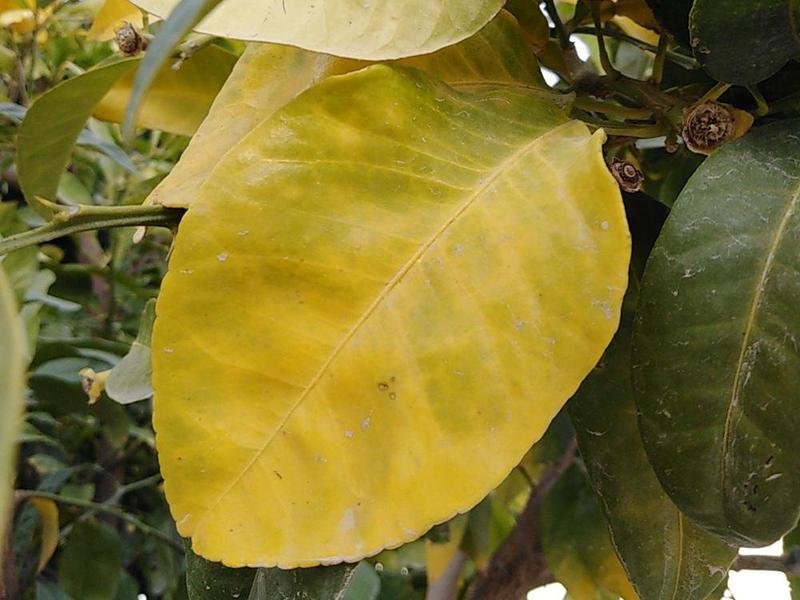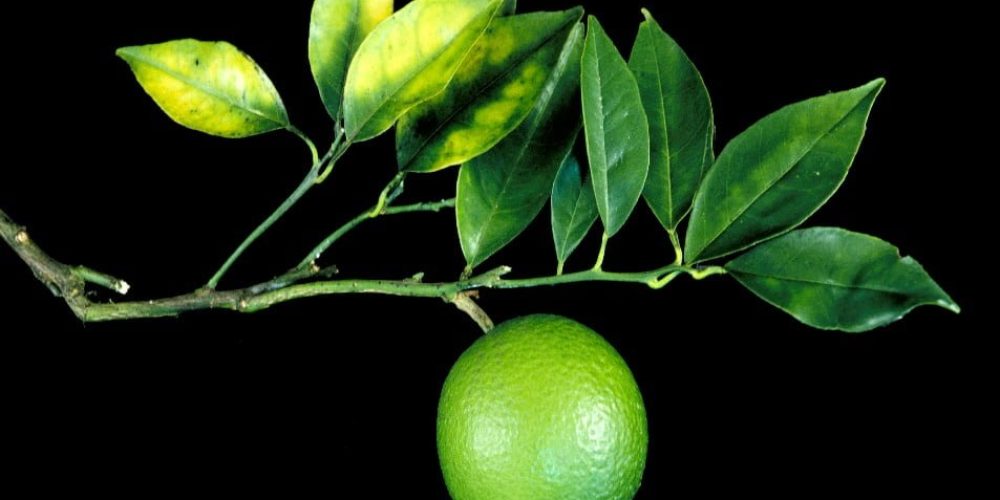Table of contents of the article
ToggleThe lack of nutrients in lemon is an agricultural problem that affects plant health and fruit quality. This article from the “WORLD OF PLANTS” website provides an explanation of the most important symptoms and methods of prevention and treatment.
Introducing the lack of nutrients in lemon
Nutrient elements are considered a basic foundation for plant growth and activity, as the deficiency of any element poses a problem for the plant if the deficiency is not treated. To treat it accurately, the grower needs to distinguish between the symptoms of deficiency of each element, despite their overlap, to treat the deficiency correctly. The following is an explanation of the symptoms of deficiency of major and minor elements:
| Element | Deficiency symptoms |
| Nitrogen | General weakness and stunting of the plant, as well as deformation of the buds, as the old leaves gradually turn towards the new leaves to a light green color until they turn yellow. |
| Phosphorus | The plant stops growing compared to healthy plants, and the lower and upper parts of the old leaves change color to purple. |
| Sulfur | Old leaves become yellow, and new leaves become gradually yellow as the deficiency increases. |
| Calcium | Young leaves curl as the tips of the plant burn, and the growth of new leaves, buds and roots is disturbed. |
| magnesium | The plant stops growing, the leaves become small, and the lower leaves fall off. |
| Potassium | Permanent yellowing on the edges of new leaves, followed by burning and necrosis of the branches from the edge of the leaf to the middle as the severity of the deficiency increases. |
| Copper | The plant becomes stunted and the leaves turn dark green. |
| Manganese | The small size of the leaves, in addition to the presence of necrotic spots in case of severe deficiency. |
| Zinc | The plant turns light green or bronze, and the young leaves turn green and change color due to burns, becoming pink, in addition to a weakness in the growth of the branches. |
| Iron | Graduation to light green and then yellow in new leaves and young shoots, with new leaves shrinking and turning white and necrotic spots appearing on them. |
| Boron | The plant is stunted and the side shoots multiply as a result of the main stem falling. The side shoots also grow and the leaves appear small, fragile and wrinkled. |
| Molybdenum | Old leaves turn yellow, and the rest of the plant appears light green. |
Magnesium deficiency
1. Symptoms of magnesium deficiency
Magnesium deficiency occurs in acidic and leached soils and can occur in alkaline soils. Symptoms appear on the leaves first. The new leaves are initially a normal green color, but in severe cases they can turn yellow before they are one year old, especially in Limbs that bear a heavy crop, the tree will become severely leafy while crop production declines.
2. Preventive and remedial measures
- In moderately acidic soils, magnesium carbonate is used, and the amount applied depends on the severity of the symptoms and the size of the tree.
- If the soil is very acidic, some lime or dolomite can be used with magnesium carbonate. The ratio of lime to magnesium carbonate varies depending on the pH of the soil, and it can take 2 to 3 years to treat the soil to correct the symptoms.
- In alkaline soil, foliar spraying of magnesium nitrate is applied, and the spraying is in the period between October and November. Foliar spraying operations must be repeated annually, in addition to covering the soil with magnesium sulfate to obtain quick and long-term results.

Nitrogen deficiency
1. Symptoms of nitrogen deficiency
Nitrogen deficiency occurs when the soil is exposed to flooding or forced irrigation, and it is evident in sandy soil that lacks organic matter. The plant also depends on the degree of soil acidity in its ability to absorb the nitrogen present in the soil, so the plant in general appears tall and thin, as the symptoms appear initially on the leaves, which turn into Gradually from light green to yellowish-white, the leaves grow smaller than usual or grow distorted. In the case of severe infection, the leaves wither and may die and fall if the infection is neglected. The color of the branches also tends to be light red, which affects the size of the crop.
2. Preventive and curative measures
- Use fertilizers that contain nitrogen, such as the basic fertilizer NPK.
- Applying urea or ammonium nitrate, where the application is done in several stages during the year.
- Use organic fertilizer such as poultry manure or nitrate lime.
- Stay away from applying nitrogen sulfur at harvest time
In conclusion, we would like to note that we, at the world of plants website, offer you all the necessary services in the world of plants, we provide all farmers and those interested in plants with three main services::-
- Artificial intelligence consulting service to help you identify diseases that affect plants and how to deal with them.
- Blog about plants, plant diseases and care of various crops ... You are currently browsing one of her articles right now.
- An application that provides agricultural consultations to clients, as well as a service for imaging diseases and knowing their treatment for free – Click to download the Android version from Google Play Store، Click to download the IOS version from the Apple App Store.
Sources:
Magnesium and manganese deficiencies in citrus – NSW Department of Primary Industries and Regional Development
Nitrogen deficiency - plantix




